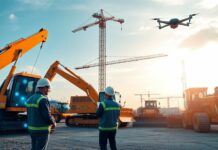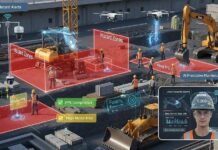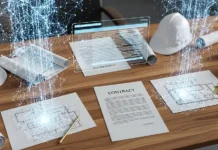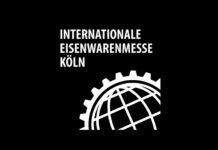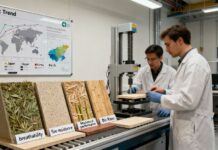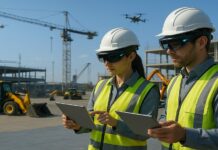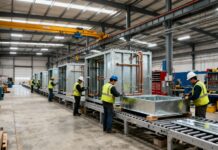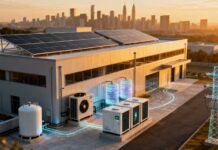The construction sector has traditionally been a reflection of technological progress, adopting new materials and techniques to advance efficiency, safety, and sustainability. Construction technology trends in 2025 are at a critical crossroads where innovations on the cutting edge are not only transforming traditional ways of working but also establishing new standards of what can be achieved.
Construction Technology Trends Shaping the Industry
The year 2025 marks a shift influenced by technological innovation that combines digital, automated, and sustainable solutions. Such trends are improving project delivery, minimising costs, and strengthening environmental stewardship. While every technology is unique, their convergence is giving rise to a more integrated and intelligent construction ecosystem.
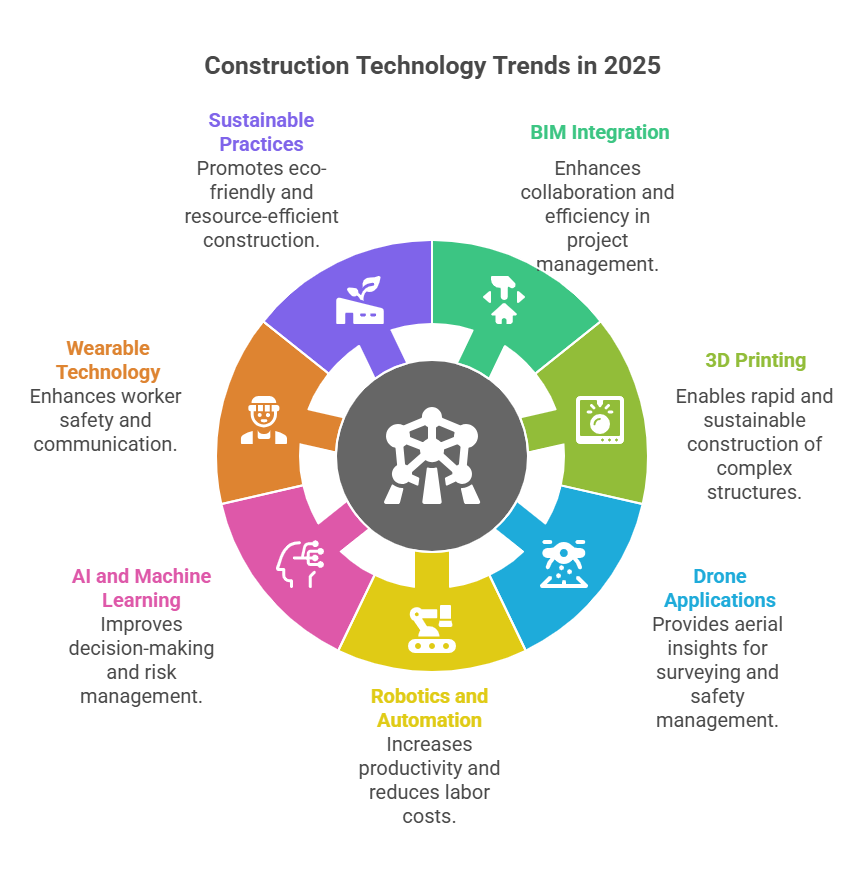
- Building Information Modeling (BIM)
Building Information Modelling (BIM) continues to be an important aspect of construction. BIM can offer more than a digital representation of the physical and functional characteristics of a building; it can serve as a collaborative process on a project. All stakeholders in the project— architects, engineers, contractors, and owners— can agree with all parties operating with the common set of information of which they are all aware. That will be important. As of 2025 and with all the functionality that has been added, BIM can also be employed to save time and cost with real-time data feeds from IOT devices and sensors, and it can update a project utilising predictive analysis.
BIM can now accomplish clash detection with more smart elements in the earlier stages of the project, saving time and money on rework and the potential costs of scheduling delays. Similar to the lifecycle management of buildings for operational purposes, for maintenance of buildings, retrofitting buildings, or decommissioning them when they have outlived their purpose on the useful life spectrum. The modelling tools for visualisation can allow stakeholders to relate the representations of design to the physical world.
The integration of AR and VR technologies can take visualisation to a completely different level where stakeholders can walk through a project virtually before it becomes a project.
- 3D Printing and Additive Manufacturing
Additive manufacturing in construction has progressed to a level of maturity that is beyond prototypes to fully realised building components, and with the growing acceptance of 3D printing as a construction method. The large 3D printers of 2025 are capable of producing large structural components, such as facades, walls, and portions of structures. This method of construction has the potential to reduce waste and cut time frames, with new and complex types of structures and features not possible using current technologies.
The year 2025 is notable because of the new developments in printed materials, which include eco-friendly materials sourced from recycled plastics and biobased binders, which support the ongoing movement within the AEC community to be more sustainable with the materials being used. 3D printing can also be used in remote locations, allowing for construction in extreme environments and disaster areas, and could have applications for lunar or outer space habitats.
- Drones in Construction
Drones are now essential equipment for surveying, monitoring, and inspection. By 2025, survey technologies had developed autonomous drones to do more detailed work, including site mapping, volumetric measurements, and tracking of developed sites, much more accurately and much more quickly. An array of high-resolution sensors and multi-spectral cameras, which enable advanced analysis of site and environmental characteristics that make for much better planning and decision-making.
Drones also enable safety management through conducting hazard surveys and hard-to-see area inspections, for example, high-rise buildings or high-risk terrains, reducing the risk to human workers. With drones integrated into BIM models, it becomes possible to achieve real-time aerial visualisation, providing a holistic view that enriches project control.
- Robotics and Automation
Robotics and automation lead the way in construction innovation and increase productivity, safety, and efficiency in construction. In 2025, robotic systems are responsible for a variety of tasks, for example, brick laying, steel fabrication, site demotion, and material transport. Autonomous construction vehicles equipped with artificial intelligence and GPS navigation systems can now work around the clock with zero delay time and significantly lessened labour costs.
Drones and robots working collaboratively through construction sites simplify and amplify any coordination and communication between workforces. These robots repetitively give less risky tasks to adjust the work with humans and efforts on problem-solving tasks and directions. The innovative development of modular robots, with the ability to complete a variety of tasks, is developing solutions for flexible workforces that can be configured rapidly for shifting project phases.
- Artificial Intelligence (AI) and Machine Learning
In construction, artificial intelligence and machine-learning algorithms continue to improve all stages of project planning, risk and safety management and resources management. In 2025, project management software powered by artificial intelligence is sifting through massive amounts of data in order to establish timelines, find improvement opportunities, and identify errors, delays or evidence of potential project delays and cost overruns in advance.
Additionally, predictive analytics allow for status monitoring to preserve the standards of safety beta by ensuring the metrics and patterns of work through AI systems identifies conditions that could relate to hazardous working conditions. The improvement of quality control systems evaluated by AI interprets images and sensor data and reduces the number of defects. AI can also streamline procurement by allowing software to study supply chain data to reduce waste and cost through improved inventory levels and schedules for material deliveries.
- Wearable Construction Technology
Wearable technology like smart helmets, sensors, and AR glasses revolutionises workforce safety and communication. These wearables in 2025 are fitted with biometric sensors to track vital signs, fatigue levels, and environmental factors to avoid accidents and health complications.
AR glasses enable workers to view real-time data overlays, directions, and safety notices in their line of sight, minimising mistakes and increasing efficiency. AR devices also enable enhanced communication between site workers and experts working remotely, allowing for immediate troubleshooting and decision-making.
- Sustainable Construction Practices
Sustainability is a top priority for the construction sector in 2025. Advances like energy-efficient materials, green roofs, and renewable integration are becoming the norm. Smart building methods utilise IoT sensors to track energy usage, maximise water consumption, and minimise waste.
As well, digital twin technology simulates environmental impacts and building performance, allowing stakeholders to make better-informed choices that reduce their environmental impact. Concepts of the circular economy, such as the recycling and reuse of materials, are being acted upon at increasing speeds, supported by digital monitoring solutions that assess material lifespan and sustainable statistics.
Conclusion
The construction industry in 2025 is undergoing a revolution at its core, spurred by technological advancements. These construction technology trends in 2025 are forcing us to rethink how projects are designed, engineered, constructed, and maintained. Adopting all these is no longer optional but a necessity for businesses that wish to remain competitive in a rapidly evolving, environmentally conscious sector.
In the future, the convergence of these technologies will enable a more cohesive, efficient, and sustainable building ecosystem. Companies that embrace and adapt these trends ahead of the curve will not only enhance project performance but also make an important contribution to global decarbonisation and resilient infrastructure development efforts.









